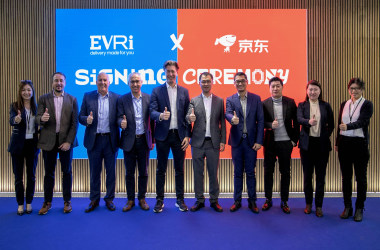Last Updated on: 22nd November 2023, 06:05 pm
The Benefits of Taking a Coffee Break at Work: Boosting Productivity and Reducing Stress
Taking a break from work can be incredibly beneficial, and what better way to do so than with a cup of coffee? For many employees, a coffee break is a daily ritual that offers a chance to recharge and refocus. In fact, studies have shown that taking a break can actually increase productivity, making it a win-win situation for both employees and employers.
Coffee breaks can provide a much-needed mental break from work, allowing employees to step away from their desks and clear their minds. This can help to reduce stress and increase focus, making it easier to tackle tasks when they return to their work. Additionally, socialising with colleagues during coffee breaks can improve workplace relationships and boost morale, creating a more positive work environment.
Not only do coffee breaks benefit individuals, but they can also have a positive impact on the workplace as a whole. Taking a break can help to reduce burnout and improve job satisfaction, leading to a happier and more productive team. Employers who encourage their employees to take regular breaks, including coffee breaks, may see an increase in employee engagement and overall job performance.
The Role of Coffee Breaks in the Workplace
Understanding the Concept of Coffee Breaks
Coffee breaks have been a part of the workplace culture for a long time. It is a short period of time where employees take a break from their work to refresh themselves. During this time, they have a cup of coffee or tea, socialise with their colleagues, or simply take a few minutes to relax.
The idea behind coffee breaks is to give employees a chance to recharge and refocus. It helps to increase productivity and reduce stress levels. Research has shown that taking regular breaks can improve cognitive function and creativity.
The Coffee Culture in Offices
The coffee culture in offices has grown over the years. It is not just about having a cup of coffee, but it is also about the experience. Many offices have installed coffee machines, and some even have baristas to make the perfect cup of coffee.
The British Coffee Association recommends that employees should take a 15-minute break for every two hours of work. This break should be away from the desk and should involve physical movement. It is essential to take breaks to avoid burnout and to maintain a healthy work-life balance.
Coffee breaks also provide an opportunity for employees to bond with their colleagues. It helps to build a positive work environment and workplace culture. It is a chance to discuss work-related issues or simply catch up on personal matters.
In conclusion, coffee breaks play an essential role in the workplace. It helps to increase productivity, reduce stress levels, and build a positive work environment. Employers should encourage their employees to take breaks and provide them with the necessary facilities to do so.
The Psychological and Physical Benefits of Coffee Breaks
Boosting Alertness and Focus
Coffee breaks have been known to boost alertness and focus, thanks to the caffeine present in coffee. Caffeine is a natural stimulant that works by blocking the action of adenosine, a neurotransmitter that causes drowsiness and fatigue. By blocking adenosine, caffeine increases the activity of other neurotransmitters like dopamine and norepinephrine, which improve cognitive function and mood.
Studies have shown that caffeine can improve reaction time, attention, and memory, making coffee breaks an excellent way to enhance productivity and performance at work. However, it’s important to note that excessive caffeine consumption can lead to jitters, anxiety, and insomnia, so it’s best to limit coffee intake to one or two cups per day.
Reducing Stress and Fatigue
Coffee breaks can also help reduce stress and fatigue, providing a much-needed break from the demands of work. Taking a few minutes to relax and enjoy a cup of coffee can help lower cortisol levels, a hormone associated with stress, and increase the release of endorphins, which promote feelings of happiness and well-being.
In addition to reducing stress, coffee breaks can also help combat fatigue. Studies have shown that taking short breaks throughout the day can help improve concentration and reduce mental fatigue, allowing employees to stay focused and productive for longer periods.
Enhancing Job Satisfaction
Coffee breaks can also enhance job satisfaction by providing an opportunity for social interaction and bonding with colleagues. Taking a break together can help build camaraderie and improve morale, creating a more positive and supportive work environment.
In addition to social benefits, coffee breaks can also provide a sense of autonomy and control, allowing employees to take a break on their terms and recharge their batteries as needed. This can help increase job satisfaction and reduce burnout, leading to happier, more engaged employees.
Overall, coffee breaks can provide a range of psychological and physical benefits, from boosting alertness and focus to reducing stress and enhancing job satisfaction. By taking regular breaks throughout the day, employees can stay energized, focused, and productive, leading to better outcomes for both themselves and their employers.
Coffee Breaks and Employee Relationships
Coffee breaks are an essential part of the workday, offering employees a chance to take a break from their work and recharge. However, coffee breaks do more than just provide a chance to relax. They can also foster workplace connections and improve collaboration and teamwork.
Fostering Workplace Connections
Coffee breaks provide an opportunity for employees to connect with one another. This can be especially valuable in larger companies where employees may not have the chance to interact with everyone on a regular basis. By taking a break together, employees can get to know one another, share stories, and build relationships.
These connections can extend beyond the coffee break itself. When employees feel connected to one another, they are more likely to collaborate and work together effectively. This can lead to improved productivity, better problem-solving, and a more positive work environment.
Improving Collaboration and Teamwork
Coffee breaks can also improve collaboration and teamwork. When employees take a break together, they have the chance to discuss work-related issues in a more relaxed setting. This can lead to new insights and ideas that may not have been uncovered in a formal meeting.
In addition, coffee breaks can help to break down barriers between departments or teams. When employees from different areas of the company take a break together, they have the chance to learn more about what each other does and how they can work together more effectively.
Overall, coffee breaks are an important part of the workday. They provide employees with a chance to relax and recharge, while also fostering workplace connections and improving collaboration and teamwork. By encouraging employees to take regular coffee breaks, companies can create a more connected and productive work environment.
Impact of Coffee Breaks on Work Performance
Increasing Productivity
Taking regular coffee breaks can have a significant impact on an employee’s productivity. Studies have shown that consuming caffeine can help improve focus and attention, making it easier to complete tasks efficiently. Additionally, taking a short break from work can help reduce stress levels, which can also have a positive impact on productivity.
Managing Workload and Deadlines
Coffee breaks can also help employees manage their workload and meet deadlines. By taking a break to step away from their work, employees can gain a fresh perspective on their tasks and come up with new ideas or solutions. This can help them work more efficiently and effectively, ultimately helping them meet their deadlines.
In addition, taking a break can help prevent burnout and fatigue, which can negatively impact work performance. By giving employees the opportunity to rest and recharge, coffee breaks can help ensure that workers are able to maintain a high level of productivity throughout the workday.
Overall, incorporating regular coffee breaks into the workday can have a positive impact on employee performance, efficiency and wellbeing. By providing workers with the opportunity to rest and recharge, employers can help ensure that their teams are able to work effectively and efficiently, ultimately contributing to the success of the organisation.
Implementing Effective Coffee Breaks
Coffee breaks are an essential part of the workday for many employees. They provide an opportunity for workers to take a break, refresh their minds, and recharge their energy levels. Implementing effective coffee breaks can improve employee morale, productivity, and job satisfaction.
Choosing Quality Office Coffee Machines
One of the most important aspects of implementing effective coffee breaks is choosing a quality office coffee machine. A quality coffee machine should be easy to use, reliable, and produce consistent results. When choosing a coffee machine, it is important to consider the needs and preferences of the employees.
There are many different types of coffee machines available, from simple drip coffee makers to high-end espresso machines. Some coffee machines can also make tea or offer a variety of different flavors. Employers should choose a quality office coffee machine that fits the needs and budget of the company.
Creating Comfortable Break Spaces
Creating a comfortable break space is another important aspect of implementing effective coffee breaks. The break space should be a place where employees can relax and recharge. It should be clean, well-lit, and comfortable.
Employers can add comfortable seating, tables, and decorations to create a welcoming atmosphere. They can also provide snacks or other amenities to make the break space more inviting.
Having an on-site break space can also encourage employees to take regular breaks and socialize with their colleagues. This can improve team morale and help build stronger relationships between employees.
Overall, implementing effective coffee breaks can have a positive impact on employee morale, productivity, and job satisfaction. By choosing a quality office coffee machine and creating a comfortable break space, employers can create a welcoming environment that encourages employees to take regular breaks and recharge their energy levels.
Conclusion
In conclusion, taking a coffee break at work or in the office can provide numerous benefits for both employees and employers. By allowing workers to take a short break, they can recharge their batteries and return to their tasks with renewed energy and focus. This can lead to increased productivity, better job satisfaction, and a more positive work environment.
For millennials, who are often highly concerned with wellness and work-life balance, taking a coffee break can be particularly important. It allows them to step away from their screens and take a few moments to relax and recharge. This can help to reduce stress and prevent burnout, which can be a major issue in today’s fast-paced work environment.
Employers who encourage their workers to take coffee breaks can also benefit in numerous ways. By promoting a positive work-life balance, they can improve employee retention and reduce turnover. They can also improve overall job satisfaction, which can lead to higher levels of engagement and productivity.
Overall, taking a coffee break is a simple and effective way to improve wellness and productivity in the workplace. By encouraging workers to take regular breaks, employers can create a more positive and productive work environment that benefits everyone involved.





